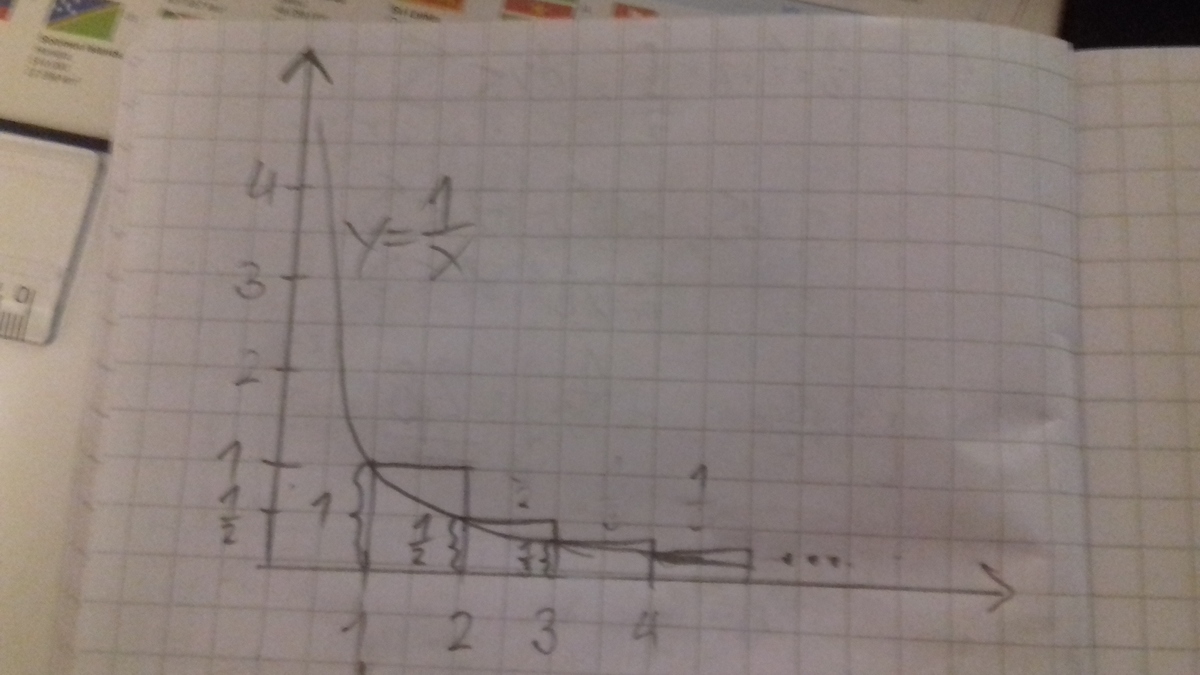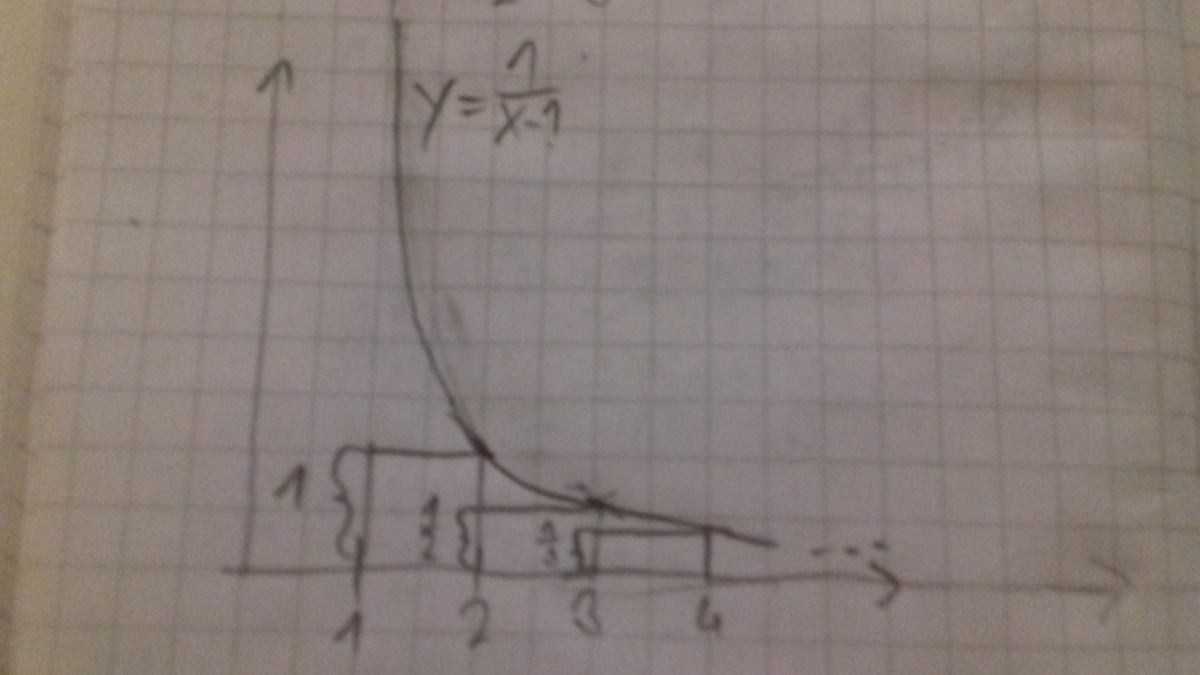Harmonic number approximation
⌊ 1 1 + 2 1 + 3 1 + . . . + 1 0 1 2 1 ⌋ = ?
Notes:
- ⌊ ⋅ ⌋ denotes the floor function .
- Calculators are allowed.
The answer is 28.
This section requires Javascript.
You are seeing this because something didn't load right. We suggest you, (a) try
refreshing the page, (b) enabling javascript if it is disabled on your browser and,
finally, (c)
loading the
non-javascript version of this page
. We're sorry about the hassle.
2 solutions
Let's represent the sum 1 1 + 2 1 + 3 1 + . . . + 1 0 1 2 1 as the total area of a set of rectangles in the xy-plane.

As it can be seen in the picture, the hyperbola y = x 1 goes through the upper left corners of the rectangles and goes below the tops of the rectangles. This means, the area between x = 1 , x = 1 0 1 2 + 1 , y = x 1 and the x-axis is smaller than the total area of the rectangles. We get
1 1 + 2 1 + 3 1 + . . . + 1 0 1 2 1 > ∫ 1 1 0 1 2 + 1 ( x 1 d x ) > ∫ 1 1 0 1 2 ( x 1 d x )
∫ 1 1 0 1 2 ( x 1 d x ) = ln ( 1 0 1 2 ) − ln ( 1 ) = 1 2 ln ( 1 0 ) ≈ 2 7 , 6 3 > 2 7

as seen in the second picture, the hyperbola y = x − 1 1 goes through the upper right corners of the rectangles and otherwise above them. This means, the total area of the first rectangle and the area between x = 2 , x = 1 0 1 2 + 1 , y = x − 1 1 and the x-axis is greater than the total area of all rectangles. We get
1 1 + 2 1 + 3 1 + . . . + 1 0 1 2 1 < 1 + ∫ 2 1 0 1 2 + 1 ( x − 1 1 d x )
1 + ∫ 2 1 0 1 2 + 1 ( x − 1 1 d x ) = 1 + ln ( 1 0 1 2 ) − ln ( 1 ) = 1 + ln ( 1 0 1 2 ) ≈ 2 8 , 6 3 1 < 2 9
Now we know that 2 7 < 1 1 + 2 1 + 3 1 + . . . + 1 0 1 2 1 < 2 9 , thus the floor function of the sum is either equal to 28 or 29. Let's prove it's 28 by showing that 2 8 < 1 1 + 2 1 + 3 1 + . . . + 1 0 1 2 1 :
By the argument used above, we get
1 + 2 1 + 3 1 + 4 1 + 5 1 + 6 1 + ∫ 7 1 0 1 2 ( x 1 d x ) < 1 + 2 1 + 3 1 + 4 1 + 5 1 + 6 1 + ∫ 7 1 0 1 2 + 1 ( x 1 d x ) < 1 1 + 2 1 + 3 1 + . . . + 1 0 1 2 1
1 + 2 1 + 3 1 + 4 1 + 5 1 + 6 1 + ∫ 7 1 0 1 2 ( x 1 d x ) = 1 + 2 1 + 3 1 + 4 1 + 5 1 + 6 1 + 1 2 ln ( 1 0 ) − ln ( 7 ) ≈ 2 8 , 1 3 5 > 2 8
We get 2 8 < 1 1 + 2 1 + 3 1 + . . . + 1 0 1 2 1 < 2 9 which proves that ⌊ 1 1 + 2 1 + 3 1 + . . . + 1 0 1 2 1 ⌋ = 2 8
γ = n → ∞ lim k = 1 ∑ n k 1 − ln ( n )
Where γ is the Euler–Mascheroni constant
Since 1 0 1 2 is large:
γ ≈ k = 1 ∑ 1 0 1 2 k 1 − ln ( 1 0 1 2 )
k = 1 ∑ 1 0 1 2 k 1 ≈ γ + 1 2 ln ( 1 0 ) = 2 8 . 2 1 . . .
⎣ ⎢ ⎢ ⎢ ⎢ k = 1 ∑ 1 0 1 2 k 1 ⎦ ⎥ ⎥ ⎥ ⎥ = 2 8